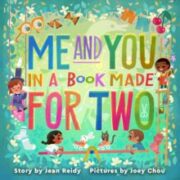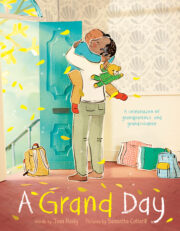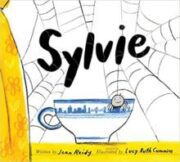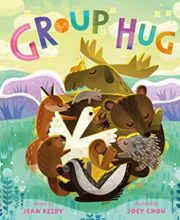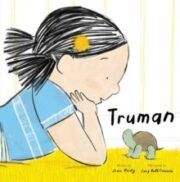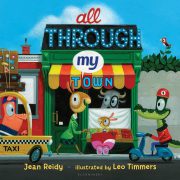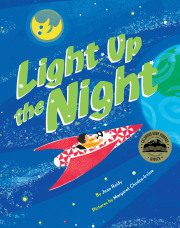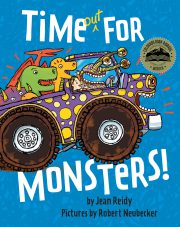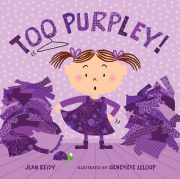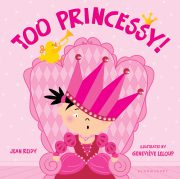No need for fancy methods or specialized software. Sometimes we need the simplest of reminders.
Pondering the Predictable Plot Point – SLUMDOG spoiler alert!

I must be the last person on Earth to have seen SLUM DOG MILLIONAIRE. But I’d heard so many wonderful things about it – aside from all the Oscars – I waited for a night when I was well-rested enough to take it all in. Well I’m still waiting to feel well-rested, but I finally said, “To heck with rest, if this movie’s that great, it’ll keep me awake.” And lo, it did.
I loved it as much as was promised. So many favorite scenes. The outhouse dive – how can a kid covered in poop be so darn cute? The fantasy-feeling train travels – how can a kid hanging upside-down in a train window be so darn cute? And of course the many scenes when the pain was so intensely portrayed, I had to turn away or brace my trembling.
But perhaps my favorite scene falls near the end when Jamal calls Latika as a lifeline on his brother’s cell phone. I’m not going to ramble on about the striking symbolism of the scene, but I have to admit one of the main reasons I loved it so much was that I saw it coming.
Traditionally stories suffer bashing reviews for predictable plots. But I think there’s a big difference between a predictable plot and a predictable plot point.
SLUMDOG’s plot was far from predictable – truly one of the most clever and creative I’ve seen. I knew, from those who saw it first, that the story had at least a glimmer of a happy ending. So once Samir’s cell phone became prominent and I guessed its end significance, I wanted it to happen. I had to have it happen. The story had to end that way or I would have been disappointed. Unless of course an equally poignant and satisfying reason for the phone was substituted.
A plot problem, for me, would have been if the phone ultimately carried minor or no significance. For example, if instead Jamal had simply called his brother after the show and reached Samir. The “life line” point provided a strong plot link and brought so many pieces full circle to a perfect ending.
A few months ago, we rented THE LIFE OF DAVID GALE, another thought-provoking movie. There too, shortly before the end, I predicted the ending and was satisfied in doing so.
Obvious, you say. Well I’ve read a few books and seen a few movies in which I predict what I think is an ideal ending or plot point and it doesn’t turn out that way. I’m left dissatisfied. I’m left wondering what the author did – what hints he/she dropped – to lead me down the wrong path. I’m not talking about the red herrings of a great mystery. I’m talking about surprises that leave me stumped. I’m talking about an unfulfilled story promise.
Sometimes surprises work. Sometimes they work very well. And yet, sometimes surprises leave me frustrated. Especially when I have a perfect ending – and not always a happy, perfect ending – mapped out in my mind and the story ends rather imperfectly.
So now it’s your turn.
How does an author create satisfying surprises? Or how does he/she create predictable plot points that fulfill the story promise without boring the reader? I’d love to hear your thoughts.
5 Page Critique from Author Jean Reidy
5 Page Critique from Author Jean Reidy
Posted using ShareThis
NEW! 5 Page Critique from Author Jean Reidy
NEW! 5 Page Critique from Author Jean Reidy
Posted using ShareThis
PB Peek #1 – General Observations
I just finished my last critique for PB Peek Week #1. What fun to read and analyze 7 totally unique manuscripts. Hurray for all the participating children’s writers!! What a stellar group.
After reviewing my letters to the authors, I’ve found some recurring comments that I thought might be helpful to note and share. Here goes:
- Kids can smell a lesson a mile a way. Don’t let the adult/teacher/parent in you write the story. Having said that, stories that hold some kind of growth or lesson for the MC can be balanced with skepticism, innocence and humor.
- If the rhyme is limiting the potential of your story, get rid of the rhyme.
- Match your story premise and MC age to your audience age. And while your text can stretch your reader/listener vocabulary-wise, watch out for abstract ideas that might not appeal to a kid’s sensibilities.
- Watch for breaks in your story logic especially when combining fantastical with everyday elements of your story.
- Illustration potential is elemental to PB texts. However, the text must stand alone, giving an editor the opportunity to create his/her own initial unique vision for your book. You don’t have to surrender your own vision, but it pays to keep an open mind in the joint effort to create the best possible picture book.
Watch for my next Picture Book Peek Week coming later this summer.
If I Stay – Not So Dark
 I just now finished IF I STAY by Gayle Forman. In case you don’t know, it’s gotten rave reviews and is one of the books featured in the WSJ article “Young Adult Fiction Takes a Dark Turn.” IF I STAY doesn’t have the shock value of WINTERGIRLS or perhaps the unraveling mystery of THIRTEEN REASONS WHY. Nor does it race along with the sick thrill of a dystopian competition as in THE HUNGER GAMES. But while I liked all these books very much, I liked IF I STAY best of all. Why? Because while extreme sadness weaves throughout Mia’s story, I didn’t find it dark. Instead I found Mia honest, real and relatable. Consider this passage
I just now finished IF I STAY by Gayle Forman. In case you don’t know, it’s gotten rave reviews and is one of the books featured in the WSJ article “Young Adult Fiction Takes a Dark Turn.” IF I STAY doesn’t have the shock value of WINTERGIRLS or perhaps the unraveling mystery of THIRTEEN REASONS WHY. Nor does it race along with the sick thrill of a dystopian competition as in THE HUNGER GAMES. But while I liked all these books very much, I liked IF I STAY best of all. Why? Because while extreme sadness weaves throughout Mia’s story, I didn’t find it dark. Instead I found Mia honest, real and relatable. Consider this passage
“It’s not that my life has been perfect. I’ve had disappointments and I’ve been lonely and frustrated and angry and all the crappy stuff everyone feels. But in terms of heartbreak, I’ve been spared. I’ve never toughened up enough to handle what I’d have to handle if I were to stay.”
As I’ve been critiquing manuscripts this week, I’ve been thinking a lot about story promise. Beginning with my predictions from the title, Forman fulfilled my expectations for the story. She made good on her word. And I like that.
As Mia weighs her decision, Forman elegantly blends Mia’s memories of the past with the current hospital and visitor activity surrounding her, allowing IF I STAY to rise from the label of dark, angst-filled YA and more fully emerge as a story of hope.
Is Dewey Decimal Done?
See yesterday’s Denver Post article “Adams County Libraries Shelving Dewey Decimal.”
It appears some local libraries are reorganizing their shelves in a Barnes & Noble sort of way.
At first glance, I feel as though bookstore systems like WordThink cater to store browsers who visit categorical sections and peruse the possibilities. But I wonder if Dewey may still be the best way to locate a particular book.
What’s your opinion on libraries dumping Dewey?
Picture Book Peek Week #1 Winners Announced!
Oh wow! So many titles and perhaps more to come. And they all sound like winners to me. I’m so honored that you all took advantage of my humble offer.
And I loved that you had your pointers poised on that send button right at noon Eastern Time. Just so you know, the time stamp reflects the time the comment came in, not the time I ultimately published it. And the titles are posted in exactly the order they arrived in my inbox. But I do have to wonder how Blogger queues comments that come in at the same time. So I think for my next PB Peek Week, I’ll let the entries flow in all day (taking the pressure off the clock) and then pick 7 out of a hat.
There were so many wonderful and hilarious titles. I wish I had time to take a look at all the manuscripts. Thank you so much for participating!
Check out the winners here: https://jeanreidy.com/2009/06/picture-book-peek-week-begins-june-8th/
I can’t wait to dig in!
Picture Book Peek Week begins June 8th!
Lately, I’ve been getting loads of requests for Picture Book manuscript critiques. I’m honored and I love to do them.
So in an attempt to balance my reading with my writing, I’ve decided to host a Picture Book Peek Week during which time I’ll offer free critiques of select PB manuscripts – including those wretched rhymers (Yup, 3 of my upcoming PBs are written in verse!). Hopefully, it will work out so well, I’ll be able to do this several times a year.
The first one begins June 8th. Here’s how it will work:
1. You may sign up for critique by entering your working PB title in the comment section of this post beginning 12:00 Noon Eastern Time on June 8th. Titles submitted before then will not be considered. Critiques will be granted to the first 7 unique authors to enter titles.
2. Manuscripts must be 1000 words or less.
3. For this Peek Week, I will only accept fiction.
4. Level of detail in the critique will vary based on my impression of the caliber of the writing.
5. Please understand that I’m not an editor and will not be providing line-editing of your work. My critique will be comprised of suggestions for improving your manuscript. So please send me your most polished piece.
6. The 7 critique winners may e-mail me their manuscripts as a Word attachment. Manuscripts will be kept completely private. When I receive the manuscripts, I’ll let the authors know when they can expect my critique.
7. As with any art form, likes and dislikes are entirely subjective. Please understand that my critiques are only one reader’s/writer’s opinion. It’s always wise to seek feedback from a few different readers. If my ideas resonate with you, they’re yours to use. If you disagree, I encourage you to compare my comments with those of other readers. But in the end, it’s your book. Stay true to your vision.
I’m looking forward to reading your work.
Jean
Spreadsheet Novel Analysis and Free Download
Spreadsheet analysis of novels allows me to pattern author storytelling and plot devices. But the value in the methodology lies in the columns I create – in other words what I choose to track throughout the book.
After reading HOOKED: WRITE FICTION THAT GRABS READERS AT PAGE ONE AND NEVER LETS THEM GO by Les Edgerton. I created a spreadsheet based on plot elements Edgerton outlines, and used it to study the middle grade novel, HERE TODAY by Ann M. Martin.
The spreadsheet allows me to look for patterns of problems, reactions, goals and actions. It also helps me focus on the elements of that critical beginning – a place where my novels need work.
Just as valuable as the ability to review the spreadsheet afterward, is the process of thinking about each element – words, paragraphs, pages, scenes and chapters – as I read and assign their purpose. The tool is therefore as valuable in its creation as in its end result. Here are a few things I learned – or affirmed – in the process:
Who wouldn’t read on?
Quick hints about the trouble in store began each of HERE TODAY’s four parts. Using this technique, Martin laid out the promise of the plot and allowed me to accept the status quo and lead-in events with intrigue and anticipation. Consider the foreshadowing that continues from that dynamite opening line throughout the first paragraph.
This was tricky for me. I like to think of the inciting incident as the one thing that needs to happen for the story to truly begin. I chose Doris winning the Bosetti drawing as just that incident. But because of this line
With that remark Ellie grows so embarrassed she wants to retreat to her private place. This could be the inciting incident instead. But for now, I labeled this second incident THE INITIAL SURFACE PROBLEM.
Martin reveals Doris Dingman’s background halfway through the book in this dialog between Ellie and her grandma:
“We saw the trophies in her room. Are they all for beauty pageants?”
“How old was Doris when she met Dad?”
“Oh, goodness. Now let me see. Eighteen, I guess. And they’d up, run off and married in the space of four months. He was your mother’s ticket out of here.”
The reader hears this history at the same time the MC does and the author delivers much information in a brief exchange.
But Martin also uses unique chronology at points in the story when she takes small steps backward, to enlighten the reader, before she moves forward. In this example, Ellie clues us in to incidents that occurred previously, but not before the novel began.
I’m not sure if these little backsteps are truly called backstory, but they work. One thing is true of all Martin’s backstory elements? They’re brief. A sentence or two and we’re moving forward again.
The only character who gets time on the page for physical description is Doris – because her looks are essential to the plot. But Martin’s other characters are clearly revealed through actions and dialog. Consider how much we learn about brother Albert from this bit of dialog:
“Wow, where is everybody?” Marie said as Mr. Dingman steered the Buick toward the diner.
“They’re at home,” said Albert, “watching TV and smelling the turkey cooking.”
“Albert,” said Mr. Dingman. “No more of that, please.”
Albert slumped even lower in his seat, then edged to his right until he was pressed against Marie’s side.
“Quit it!” said Marie.
“What’d I do?”
“You touched me.”
“Albert,” said Mr. Dingman again. “What did I just say?”
“Well, what are you going to do to me? Take me home? I don’t want to go to the stupid diner.”
Ah hah. We see very different child from his sister Ellie, the peacekeeper.
As in the above example, many novel segments fell under several plot categories in my spreadsheet. This indicates that Martin accomplishes multiple goals within her scenes. See how in the next few sentences we see not only the development of a surface problem but also Ellie’s reactions to it:
She looked around for her father and saw that his own eyes were fastened not on Doris, but on the men. And she looked away quickly, down at the ground, at a button someone had lost.
In that brief scene we see trouble brewing. Ellie’s shame and embarrassment ooze from the page.
After identifying many of the surface problems in HERE TODAY, I rarely found a corresponding action on the part of the main character. In HOOKED, Edgerton discusses MC reactions and actions in response to each surface problem throughout the story. But our MC, Ellie, is much more passive. She doesn’t do much of anything except try to keep the peace now and then. And even those actions are rarely overt. I grew frustrated with my spreadsheet feeling like I had so few actions in relation to Ellie’s many surface problems.
Then – BINGO! – I realized Ellie’s inaction is exactly her reaction to her problems. In fact, it’s so pervasive, it’s a crucial component of her story problem. And when she finally takes action, towards the end of the story – she’s fully-realizing her story problem. Brilliant!! The spreadsheet works!!
Ai yai yai. Another tough one. I went back and forth on this but ultimately concluded that Ellie’s story-worthy problem was that Ellie needed a mother. She fully realizes this during her trip to NYC and she affirms it when Doris returns home one last time.
The resolution of the SWP thus, is Ellie’s realization that a village can raise a kid. She’s got the old ladies and the other families on Witch Tree Lane. She’s got her father, her grandparents and her best friend. And she’s got herself. By the end of the novel she’s grown active and assertive, a true transformation from her passive prior self.
In every novel there are those scenes in which things seem to be moving along just fine. I don’t know what to call them. They aren’t transitions, necessarily, because they’re more than a link. They actually provide mood and setup for the next obstacle or problem. I’d like to know more about those storytelling elements, what they’re called and how they’re used effectively. More on that in another post.
If we can become better artists by studying the masters, then we can become better novelists by studying the master storytellers. Reading is crucial. But Edgerton’s plot devices coupled with the spreadsheet method helped me think about the storytelling in a more organized fashion. During revisions of my own novel, I plan on putting the spreadsheet to work again.
In the meantime, I’ve added a free download of my Novel Analysis Spreadsheet to my website at www.jeanreidy.com. It’s meant to be used in companion with Edgerton’s book. I’d love to hear your suggestions for improving it or your comments on my study of HERE TODAY.
Phew! That was a long one!



